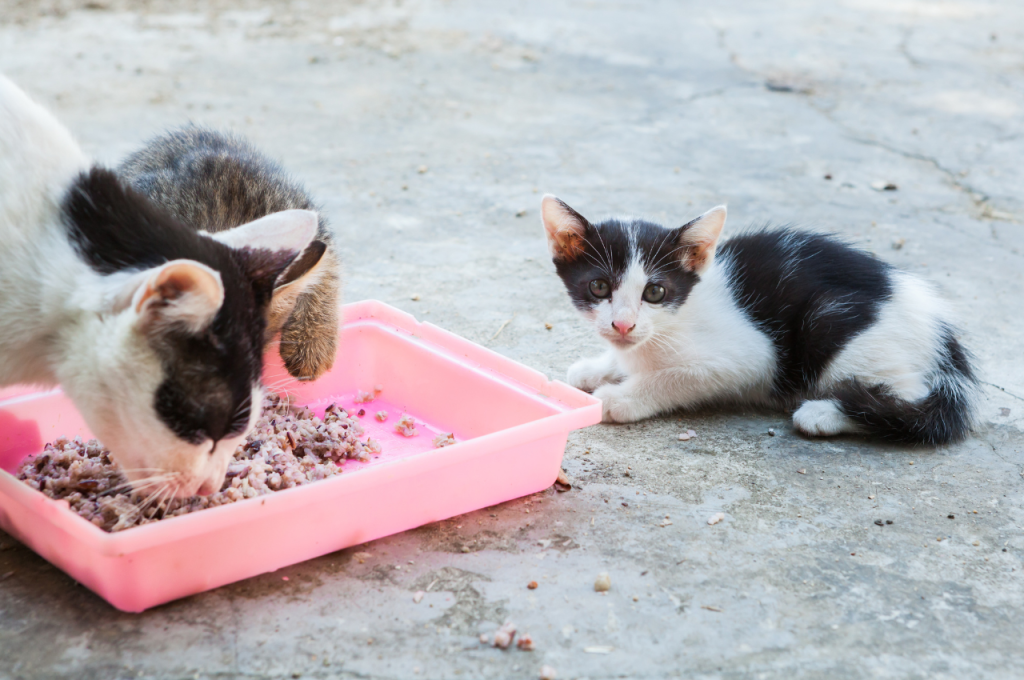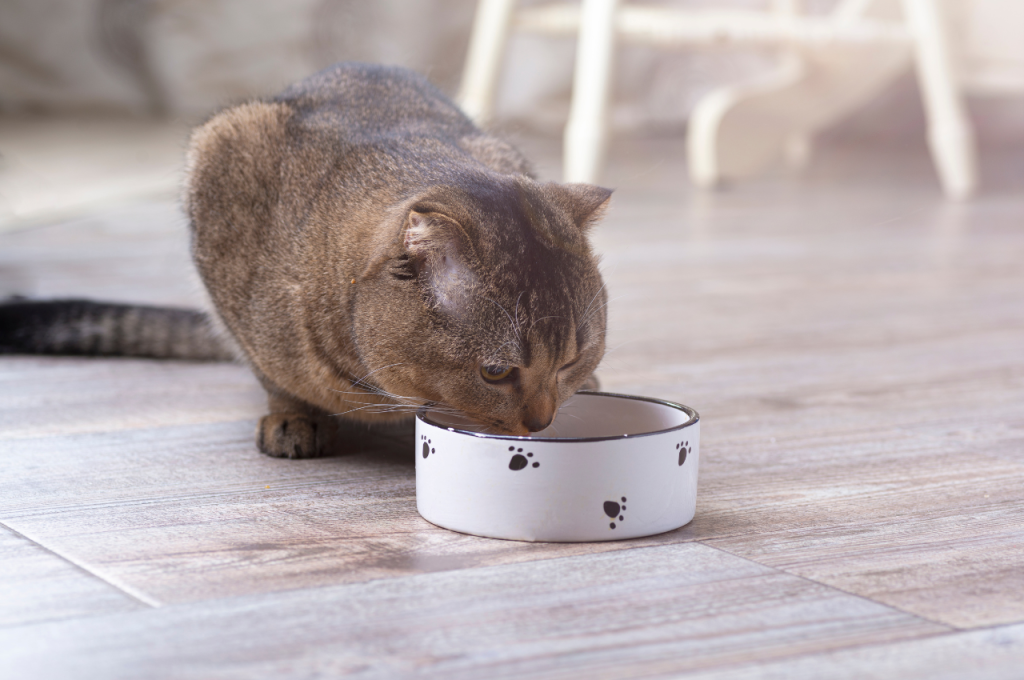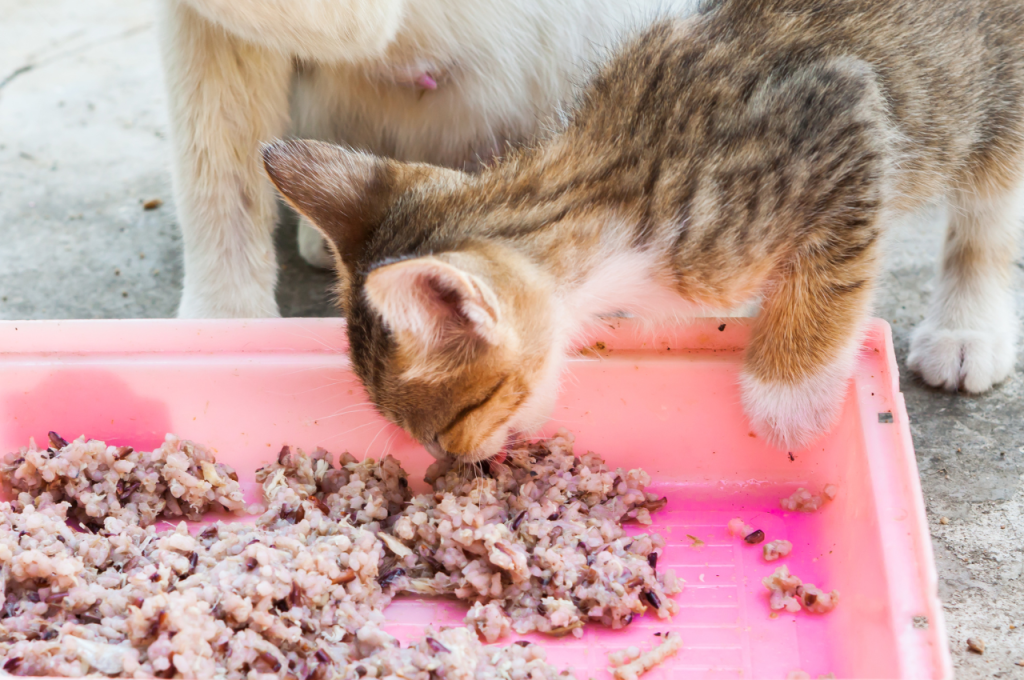While rice is generally safe for cats to eat, it should be given in moderation as it is not a necessary part of their diet. Cats are obligate carnivores, meaning they require a primarily meat-based diet. Rice lacks essential nutrients that cats need, such as taurine. Feeding your cat a balanced commercial cat food is recommended to ensure they receive all the nutrients they need. If you want to offer your cat rice as a treat, make sure it’s cooked and plain, without any seasonings, and only provide a small amount.
When it comes to a cat’s diet, many pet owners wonder if rice should be included. Surprisingly, rice can be a good addition to a cat’s diet. While cats are obligate carnivores and require a diet rich in animal protein, small amounts of rice can provide some benefits.
Rice is a source of carbohydrates, which can provide energy for cats. However, it’s important to remember that rice should only be given as a supplement to a balanced and appropriate cat food diet, and it should not make up the majority of their meals.
The Role of Rice in a Cat’s Diet
Rice is a commonly consumed staple food in many cultures around the world. It is a versatile grain that can be cooked in various ways and is often included in meals as a source of carbohydrates. With the rising popularity of homemade cat food, many cat owners wonder if it is safe and beneficial to include rice in their feline friend’s diet.

When it comes to cats, it is essential to understand their unique nutritional needs. Cats are obligate carnivores, which means their bodies are designed to thrive on a diet primarily consisting of meat. Their natural diet includes high levels of protein and fat, with minimal carbohydrates. Therefore, the inclusion of rice in a cat’s diet may not align with their evolutionary nutritional requirements.
While rice can provide some nutritional benefits, it is not necessary for a cat’s diet. Cats require specific amino acids, such as taurine, which can be obtained through meat sources. Rice lacks these essential amino acids and may not provide complete nutrition for felines. Furthermore, cats have a limited ability to digest and metabolize carbohydrates, making excessive carbohydrate intake potentially harmful to their health.
However, in certain situations, rice can be included in a cat’s diet in small quantities and under the guidance of a veterinarian. For example, if a cat has specific dietary restrictions or allergies, rice may be used as an alternative carbohydrate source to meet their nutritional needs. In such cases, it is crucial to consult with a veterinarian to ensure the diet is appropriately balanced and meets the cat’s unique requirements.
It’s also worth noting that not all types of rice are the same. Brown rice, for example, contains more fiber and nutrients compared to white rice. If rice is included in a cat’s diet, opting for brown rice can offer some additional nutritional value. However, it’s important to remember that rice should only be a minor part of a cat’s overall diet and should not replace the essential protein and fat sources needed for their well-being.
Potential Risks of Including Rice in a Cat’s Diet
While rice may not be harmful in small quantities, there are certain risks and considerations to keep in mind when including it in a cat’s diet. These include:

- Risk of nutritional imbalances: As mentioned earlier, rice does not provide all the necessary nutrients that cats require for optimal health. Relying too heavily on rice as a carbohydrate source may lead to nutritional deficiencies if other essential nutrients are not provided through appropriate meat sources.
- Potential for weight gain: Cats have a limited ability to digest carbohydrates compared to other animals. A diet high in carbohydrates, including rice, can lead to weight gain and obesity in cats. Obesity in cats is associated with various health issues, including diabetes and joint problems.
- Digestive issues: Cats are not natural grain consumers and may have difficulty digesting grains like rice. It can lead to digestive upset, including diarrhea and vomiting. If a cat shows signs of gastrointestinal distress after consuming rice, it is essential to discontinue its use in their diet.
Tips for Including Rice in a Cat’s Diet
If you still wish to include rice in your cat’s diet, it’s important to follow these guidelines:
- Consult with a veterinarian: Before introducing rice or any other new food into your cat’s diet, consult with a veterinarian. They can assess your cat’s specific nutritional needs and guide appropriate inclusion.
- Keep it minimal: Rice should only be a small part of your cat’s overall diet. It should not replace essential protein and fat sources, which are crucial for their well-being. The primary focus should be on providing a balanced, meat-based diet.
- Choose brown rice: If you decide to include rice, opt for brown rice over white rice. Brown rice contains more fiber and nutrients, offering some added nutritional value.
- Cook it properly: Ensure that the rice is cooked thoroughly and is soft and easily digestible. Undercooked rice may be challenging for cats to digest and can cause digestive upset.
- Observe for any adverse reactions: After introducing rice to your cat’s diet, monitor them closely for any signs of gastrointestinal distress or allergic reactions. If any issues arise, discontinue the use of rice and consult your veterinarian.
Alternatives to Rice in a Cat’s Diet
If you’re looking for alternative carbohydrate sources to diversify your cat’s diet, there are several options you can consider:

- Potatoes: Cooked and mashed potatoes can be included in small quantities as a carbohydrate source. However, make sure to remove any seasoning or ingredients that may be harmful to cats.
- Pumpkin: Plain, cooked pumpkin can provide natural fiber and help with digestion. It’s important to use plain pumpkin without added sugars or spices.
- Sweet potatoes: Similar to regular potatoes, cooked and mashed sweet potatoes can be included in small amounts to provide carbohydrates and fiber.
- Peas: Cooked peas can be used as a carbohydrate source in small portions. They also provide some additional fiber.
Remember, while these alternatives can provide some variety in your cat’s diet, they should not replace the essential protein and fat sources that are crucial for their nutritional needs. Consult with a veterinarian to ensure you are providing a balanced and appropriate diet for your cat.
Frequently Asked Questions
The following are some common questions and answers related to the topic of whether rice is good for a cat’s diet:
Can cats eat rice?
Yes, cats can eat rice in moderation. However, it should not be a staple in their diet. Rice can provide some nutritional benefits for cats, such as carbohydrates and certain vitamins and minerals. It can also be a source of energy and aid in digestion. However, cats are obligate carnivores and their diet should primarily consist of animal protein. Too much rice can lead to weight gain and imbalances in their overall nutrient intake.
If you choose to include rice in your cat’s diet, it should be cooked plain without any seasonings or additives. It is important to remember that every cat is unique, and some may have specific dietary restrictions or sensitivities. Consult with your veterinarian before making any significant changes to your cat’s diet.
Is rice safe for cats with dietary restrictions?
Rice can be safe for cats with dietary restrictions, but it depends on the specific restriction. Cats with certain medical conditions, such as diabetes or gastrointestinal issues, may benefit from a diet that includes a small amount of rice. However, it is crucial to work closely with your veterinarian to determine the appropriate amount and type of rice for your cat’s unique needs.
It is important to note that rice should never be used as a substitute for a prescribed diet or treatment plan recommended by your veterinarian. Always follow their guidance and monitor your cat’s response to any dietary changes.
How should rice be prepared for cats?
If you choose to feed rice to your cat, it should be prepared plain and without any seasonings or additives. Boil the rice in water until it is cooked thoroughly, and ensure it cools down before serving it to your cat. It is essential to cook the rice fully to make it easier for your cat to digest.
Remember to always consult with your veterinarian before introducing any new food into your cat’s diet, including rice.
What are the alternatives to rice in a cat’s diet?
If you prefer not to feed your cat rice or if your cat has certain dietary restrictions, there are alternative options that can provide the necessary nutrients. Animal-based protein sources, such as chicken, turkey, and fish, are essential for a cat’s diet. These can be included in the form of wet or dry cat food.
Additionally, there are grain-free cat foods available on the market that eliminate the need for rice or other grains. These foods often contain alternative sources of carbohydrates, such as sweet potatoes or peas.
Conclusion
While rice can be included in a cat’s diet in certain circumstances, it is not an essential or biologically necessary component. Focusing on providing a high-quality, balanced diet with appropriate protein and fat sources is key to meeting a cat’s nutritional needs.
Consultation with a veterinarian is crucial when considering any dietary changes for your feline companion.
